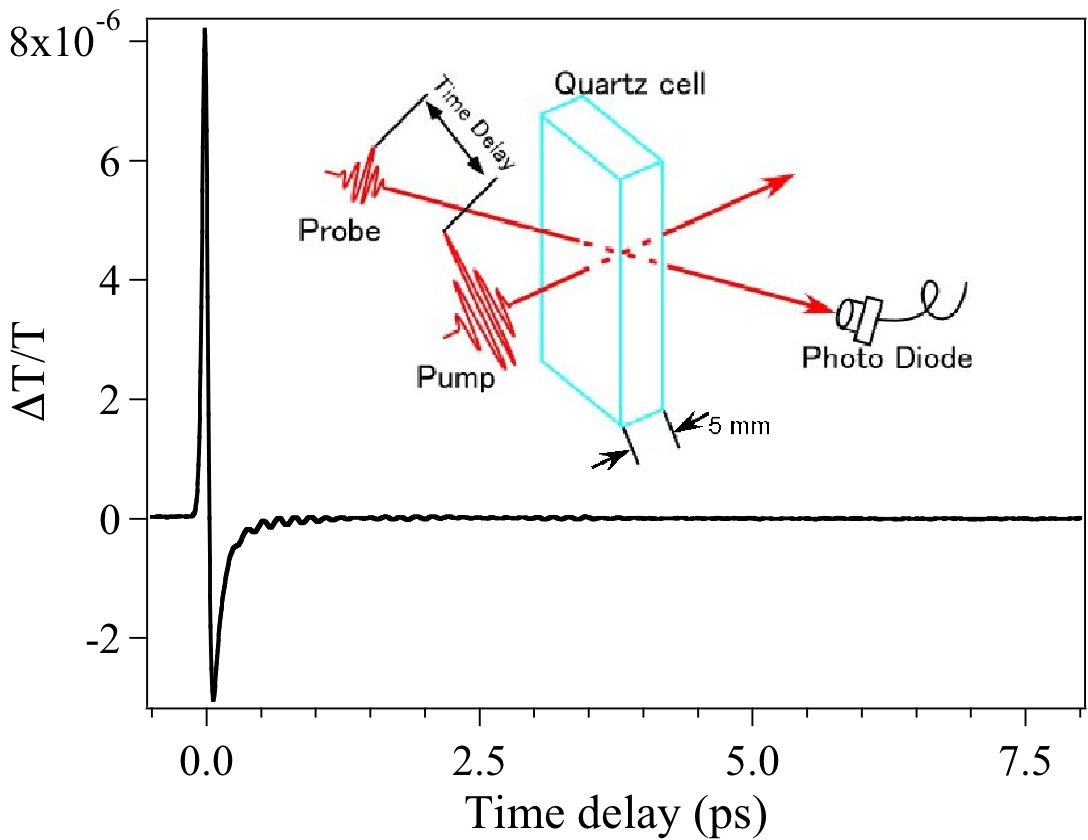| |
Carbon nanotubes (CNTs)
are one of the most intriguing nano-materials, which are useful for
molecular devices, such as a chemical sensor and a nano-machine capable
for medical science. One potential way to realize the nano-machine by
the use of CNTs, which can work in biological systems, e.g., a drug
delivery system, is to use them in solution with proteins.
Therefore, CNT devices will be used in various pH environments in
biological systems, e.g., the typical pH of human arterial blood is
~7.4, that is weakly alkaline. Since the chemical reactivity of CNTs is
dominated by the fundamental physical processes on their surface,
investigation of dynamics at surfaces, such as charge transfer,
exciton-plasmon coupling, and electron-phonon energy transfer, is
crucial to prepare suitable environments for CNT devices.
We have used a femtosecond pump-probe
impulsive Raman technique to explore the ultrafast dynamics of micelle
suspended single walled carbon nanotubes (SWNTs) in various pH
environments. The structures of coherent phonon spectra of the radial
breathing modes (RBMs) exhibit significant pH dependence, to which we
attribute the effect of the protonation at the surface of SWNTs,
resulting in the modification of electronic properties of semiconductor
SWNTs. Analysis of the time-domain data using a time-frequency
transformation uncovers also a second transient longitudinal breathing
mode, which vanishes after 1 ps of the photoexcitation.
This spectroscopic
technique is more sensitive to various environments of CNTs than
conventional Raman spectroscopy
because the transient snap shot of the CNT motion can be monitored.
Thus, we have explored the ultrafast vibrational dynamics of coherent
RBMs in real time using the femtosecond transmission technique based on
impulsive Raman scattering. The two dominant RBMs were observed at 6.4
and 7.2 THz, whose spectral intensities depended on the pH value. The
enhancement of the lower RBM (6.4 THz) at the higher pH values could be
attributed to the change in the electronic structure of SWNT from
p-doped to nondoped nature by the deprotonation effect. Dephasing time
of the lower RBM extracted from the time-domain datum exhibited pH
dependence, which was explained by the electron-phonon coupling through
deformation potential interaction, while that of the higher RBM did not
depend on the pH value, implying existence of the electron-phonon
decoupling in a few picoseconds. Analysis of the time-domain data by
both the continuous wavelet transform and the Gabor transform methods
revealed the new peak at $\approx$ 4.4 THz in the transient response
within 1 ps, which appeared to be the signature of the longitudinal
breathing mode of SWNT.
*Collaboration with Prof. K. Shiraki. |
|
 |